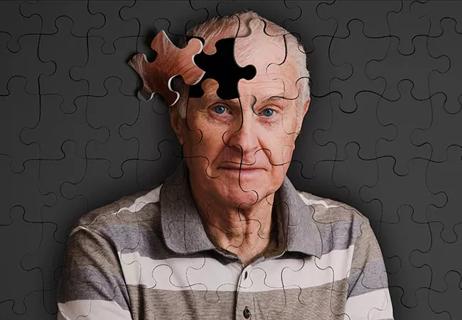Advertisement
New JACC document gives guidance on evaluation for advanced therapies

Prompt referral of patients with heart failure for evaluation for transplantation or a mechanical circulatory support (MCS) device is central to successful outcomes. That’s the key takeaway from a new Journal of the American College of Cardiology Council Perspectives document designed to provide guidance on when a patient should be referred to a heart failure MCS center and to review characteristics for prioritizing transplantation vs. placement of a left ventricular assist device (LVAD).
Advertisement
Cleveland Clinic is a non-profit academic medical center. Advertising on our site helps support our mission. We do not endorse non-Cleveland Clinic products or services. Policy
“Referral for advanced therapy for heart failure is often delayed to the point that a patient is no longer a good candidate for either a transplant or LVAD placement,” says Cleveland Clinic heart failure cardiologist Randall C. Starling, MD, MPH, a co-author of the article. “A primary goal of this statement is to provide cardiologists and internists with a better decision-making strategy to improve referral time.”
The article recommends structuring evaluation for referral around three overarching questions, as outlined below.
1) Is transplantation or durable assist device placement indicated? “All patients with features of low cardiac output syndrome should be considered for referral,” advises Dr. Starling. “Early referral promotes ongoing evaluation and patient education. Most importantly, it helps ensure the opportunity to intervene before end-organ disease occurs.”
“Since heart transplantation or LVAD placement is such a significant life event for patients, they may not always be mentally ready to take that step if they are presenting in heart failure and it’s the first time they are hearing about the treatment options,” notes Michael Tong, MD, Director of Cardiac Transplantation and Mechanical Circulatory Support at Cleveland Clinic. “Referring patients earlier and having a heart failure cardiologist co-manage a patient with their cardiologist or internist can help prepare patients and improve their understanding and acceptance of these advanced treatment options if and when the time comes.”
While other guidance documents provide detailed indicators of the need for referral, the new document’s authors recommend a simplified approach summarized by the mnemonic, I NEED HELP. This stands for the following:
Advertisement
Dr. Starling urges doctors to keep in mind that right-sided heart failure — which is most often ultimately caused by left-sided failure — may disqualify a patient for an LVAD. “Persistent edema and increasing bilirubin levels — indicating right heart failure is developing — should prompt urgent referral,” he warns.
“When right heart failure is first developing in the setting of left heart failure, there is still a window of opportunity where the right ventricle could recover if the left heart is supported,” notes Dr. Tong. “If this window is missed, then the right heart undergoes irreversible remodeling, which can lead to renal and hepatic failure.”
“A hospital admission for heart failure is a sentinel event,” adds Edward Soltesz, MD, MPH, Surgical Director of Cleveland Clinic’s Kaufman Center for Heart Failure Treatment and Recovery. “It should immediately raise a red flag for patients and providers. It is critical for caregivers to not minimize the severity and significance of this event and to work expeditiously to ensure appropriate referral to a specialist in advanced heart failure.”
2) Are there contraindications to either intervention?There is no straightforward agreed-upon answer to this question in the scientific community, Dr. Starling cautions. Hence, a view of the whole patient is in order.
Poor outcomes tend to be seen in patients with malnutrition (either cachexia or obesity), frailty, pulmonary hypertension with right ventricular failure, or systemic diseases associated with poor survival. Age greater than 70, a malignancy within five years or irreversible renal dysfunction are often considered potential barriers specifically for transplantation and require careful discussion by the heart failure care team.
“As treatment options and devices have improved over the years, many more patients are being offered treatment who would not have been considered good candidates before,” says Dr. Tong. “Patients who may not be good candidates or have not met criteria for heart transplantation can still be good candidates for an LVAD.”
3) Transplantation vs. LVAD: How to choose? Although heart transplant has the best record for reducing mortality and improving quality of life for patients with end-stage heart failure, the number of available organs remains a limiting factor. Fortunately, LVADs are a proven therapy that can dramatically improve survival and quality of life, and LVAD technology is continually improving, Dr. Starling notes. Evidence indicates that two-year survival rates are now similar between the two options, although long-term comparisons have yet to be definitively conducted.
Advertisement
Choosing the best option can be a complex process that typically benefits from multidisciplinary heart failure team input. The authors advocate a strategy based on the following principles:
“Keep in mind that this is a rapidly evolving field, and new rules and discoveries may change the outlook for patients over their lifetime,” says Dr. Starling.
“The key to success is early referral to a multidisciplinary heart failure team to map out strategy for patients on an individual basis,” adds Dr. Soltesz. “We want to intervene before the heart failure affects other organs and becomes irreversible.”
The article also discusses implications of changes from the new organ allocation system adopted in October 2018, and it is the first document of its kind since then. Under the changes, listing allocation is essentially based on a tiered hierarchy from very ill hospitalized candidates to less ill outpatients awaiting transplantation.
“The changes were designed to address inequities in organ allocation and reduce the need for listing priority exception requests,” says Dr. Starling. In the previous system, he explains, certain populations were at a disadvantage, prompting abundant exception requests.
Historically, the use of MCS as a bridge to transplantation increased substantially over the years, which the old system was ill-equipped to address. Geographic distribution alterations were also made with the new system.
“It remains to be seen exactly how the new system will play out,” Dr. Starling concludes.
Advertisement
Advertisement

Pilot study confirms feasibility of conducting additional research on the novel treatment

Longer hospitalization does not mean a safer, faster recovery for patients age 70+

Structured data helps identify older adults at risk for poor outcomes, defines patients who require more comprehensive assessments

Social prescribing turns leisure activities into good “medicine”

A large geriatric study aims to find the answers

Analysis underscores how telehealth can help pinpoint elder abuse

Accurate, transparent documentation may reduce risks associated with common disorder